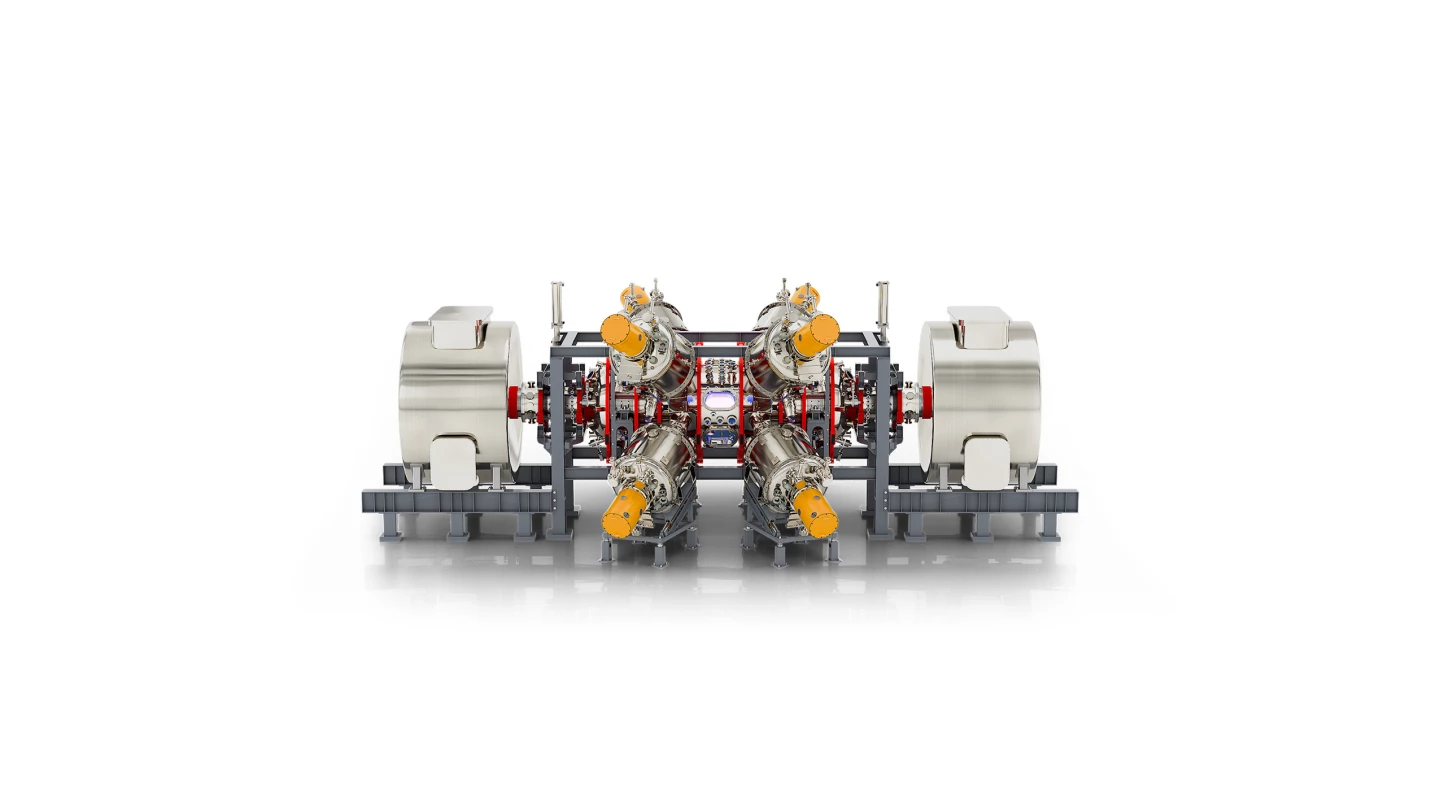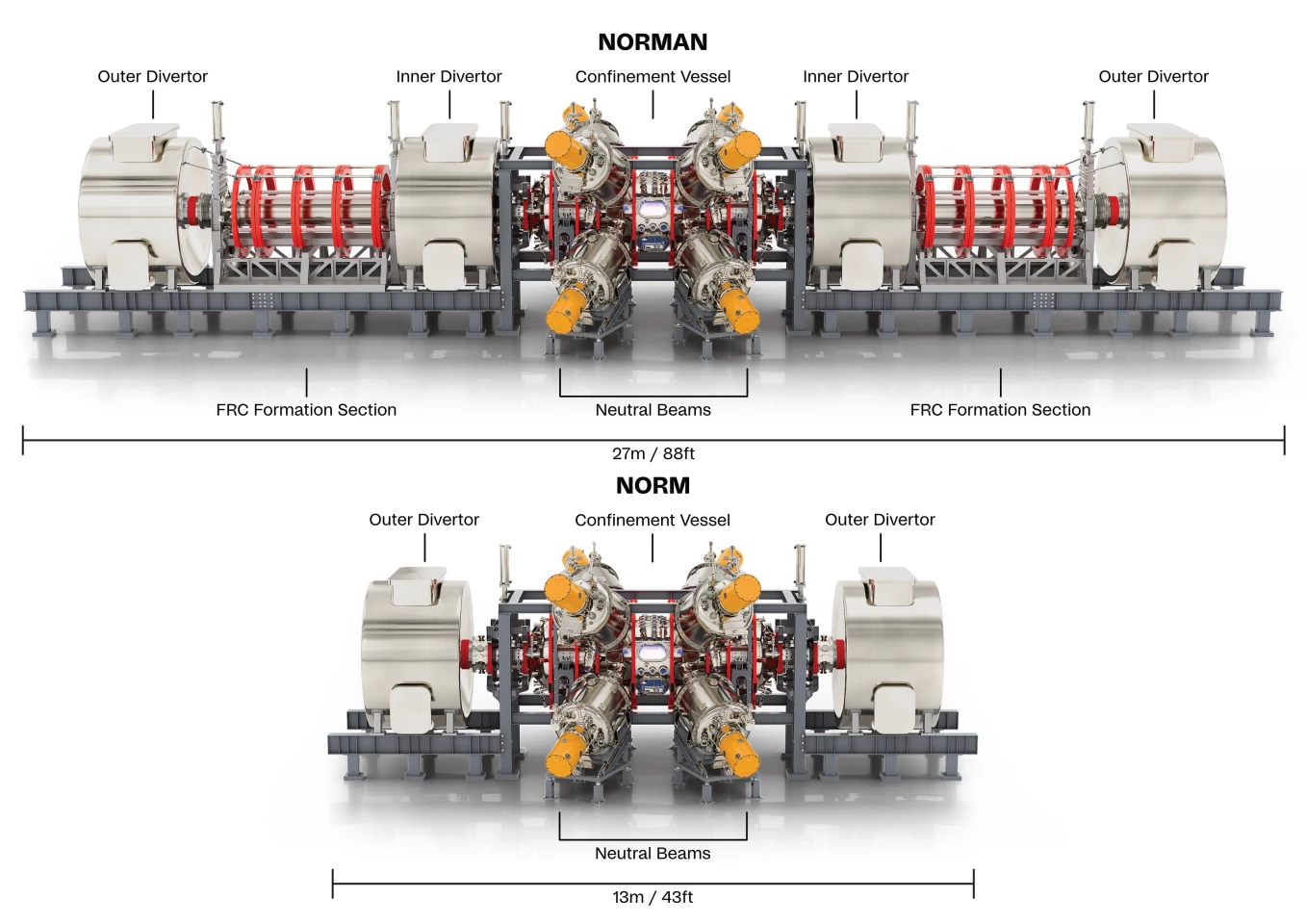Commercial fusion power plants may be cheaper and easier to build thanks to a breakthrough by TAE Technologies that allows reactors to generate their own containment fields without the need for massive magnetic coils and other systems.
Practical fusion power has been touted as only 25 years in the future ever since 1945, but there are some bright spots on the horizon that suggest that it could come to pass as soon as the next decade.
Part of the problem has been that the tokamak reactor, the front-runner design for a fusion power plant, has become a bit like that home extension that got out of hand and sucked up a lot more time and money than originally budgeted for until you wish you'd never started it in the first place.
First conceived of by Igor Tamm and Andrei Sakharov in the 1950s, tokamaks use a toroidal magnetic field to contain the hydrogen plasma to help keep it at the sun-like pressure and temperature needed to ignite fusion. The problem is that over decades of development tokamak designs have become gigantic, with huge, complicated superconducting magnetic coils to generate the containment fields along with equally complex and huge electromagnetic heating systems.
The result is that the largest tokamak weighs in at 23,000 tonnes and is still a long way from being practical.
Using a different type of fusion reaction combined with a new reactor design, TAE says that it's come up with a simpler, more efficient way to build a commercial reactor compared to a tokamak. It does this by dumping the toroidal field in favor of a linear one that is based on what is called the Field-Reversed Configuration (FRC) principle.
Essentially, FRC does away with the massive magnetic coils by making the plasma produce its own magnetic containment field. After accelerating high-energy ions of hydrogen and then giving them an electrically neutral charge, these are injected as a beam into the plasma. On colliding with the plasma, the beam particles are re-ionized, while the collision energy heats the plasma.
The clever bit is that this sets up toroidal currents in the plasma. As these intensify, the magnetic field used initially to contain the plasma inverts and the plasma starts generating its own containment field. This field can be configured in real-time for stability and adjusting the pressure as required.
According to TAE, an FRC reactor can produce up to 100 times more fusion power output than a tokamak based on the same magnetic field strength and plasma volume. This allows for a surprisingly simple linear reactor design that is cheaper to build and operate. Using a new neutral beam injection system, the company says that it has been able to improve on a previous experimental reactor, reducing the machine’s size and complexity while slashing the costs by 50%.
In addition, FRC allows a reactor to run on proton-boron aneutronic fusion. That is, a fusion reaction that fuses a hydrogen nucleus and a boron-11 atom instead of two atoms of the hydrogen isotopes deuterium and tritium. It's called aneutronic because instead of producing a neutron, the reaction p+¹¹B→3α+8.7MeV produces three alpha particles (helium-4 nuclei) plus a lot of energy.
This is attractive because the fewer neutrons the less damage is done to the reactor, the energy being released as charged particles is easier to harness, less shielding is required, and boron-11 is relatively abundant and is not radioactive.
The new reactor is called Norm because it's significantly shorter than Norman, its predecessor. This is because the new FRC system allowed the engineers to dump the long quartz tubes at either end of the chamber that were used for plasma creation through supersonic collisions during plasma injection.
The data from Norm will be used to inform construction of the next reactor, Copernicus, which will lead to Da Vinci (never mind that Vinci was where Leonardo was from, not his name, but there you are), TAE's commercial prototype that is expected to enter service in the next decade.
"With Norm, we have mastered the remaining complexities of the FRC, and through its successful operation, TAE has materially de-risked Copernicus," said TAE CEO Michl Binderbauer. "The NBI-only achievement is an inflection point for TAE’s fusion R&D, charting a path for streamlined devices that directly addresses the commercially critical metrics of cost, efficiency and reliability. This milestone significantly accelerates TAE’s path to commercial hydrogen-boron fusion that will deliver a safe, clean and virtually limitless energy source for generations to come."
The research was published in Nature Communications.
Source: TAE Technologies









